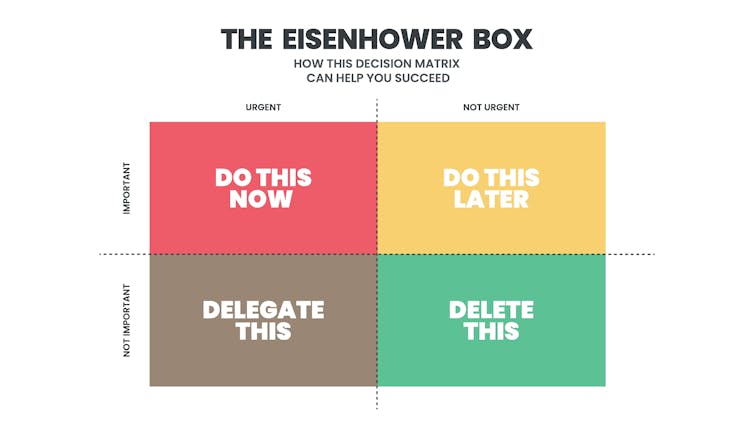
Imagine that it’s 4:59 p.m., only one minute before your deadline. You swore you’d never put yourself in this position again, and yet you have. This isn’t your best work, and you’ll be lucky just to turn anything in. What would you do differently if you could turn back the clock?
Living with ADHD can feel like this on a daily basis, but it doesn’t have to.
For millions of adults throughout the world, attention-deficit/hyperactivity disorder, best known as ADHD, is a persistent disorder that begins in childhood and is characterized by inattention, hyperactivity and impulsivity, or a combination thereof. Complicating the diagnosis is that ADHD often co-occurs with, and is sometimes mistaken for, other health conditions like anxiety or substance abuse.
Because of the steady stream of negative feedback people with ADHD receive about their productivity, organizational skills and time management, some people with the disorder may have low self-esteem or feel inadequate. But rather than an intrinsic personal defect, ADHD is a treatable condition. Research shows that behavioral strategies, along with medication when necessary, can help people improve their focus and ease of functioning in daily life.
As a psychologist and an assistant clinical professor at the University of Colorado Anschutz Medical Campus, I lead an adult therapy group that focuses on skills to manage ADHD. From that work, I’ve compiled numerous strategies to help anyone who has trouble harnessing their attention, whether or not they’ve received a formal ADHD diagnosis.
Organizational systems and prioritizing
A simple organizational system can improve focus by providing a way to keep track of important activities. Ideally the system is centered on one tool, such as a notebook or phone app, assuming the phone is not too distracting. Developing a routine that includes a daily schedule, a regularly updated to-do list and a calendar to remind yourself of appointments can provide a foundation for building focus and a sense of control.
With the to-do list, it’s crucial to break tasks down into manageable parts and then prioritize them. Knowing what to prioritize can be difficult, but one helpful approach is the Eisenhower matrix, which divides tasks into four quadrants: urgent and important, like a work project that’s due tomorrow; urgent and unimportant, such as a request that someone else can fulfill; nonurgent but important, like long-term projects; and nonurgent and unimportant, meaning something that doesn’t need to be done.
Many with ADHD are motivated to first fulfill urgent and unimportant tasks such as responding to the requests of others, because someone else’s sense of urgency seems more important than their own needs. Also, doing something for someone else can lead to quick positive feedback and provide a welcome break from what may be a stressful task. The Eisenhower matrix prioritizes what’s most important instead of what’s most immediately gratifying.

Managing the environment and limiting distractions
Several strategies can help you stay on track. It’s key to create an environment that’s conducive to productivity. That means limiting distractions and setting up barriers to temptation. Use social media web blockers while working, and ideally put your phone and computer in airplane mode. Set up environmental cues, like alarms and visual reminders, to monitor time and make sure you’re sticking with your targeted priority.
Waiting to focus on a task until just before the deadline not only causes last-minute stress, but it also has a domino effect on other priorities and basic life necessities, like eating and sleeping. This can be remedied with the “distractibility delay,” a method of staying on task that’s especially useful for tasks you want to avoid. The first step is to designate a time period for which you can stay focused. For example, focus on work for 25 minutes, then take a five-minute break before repeating the cycle.
Set a timer and have your notebook nearby. When you begin doing the challenging task, you may discover that other unrelated activities suddenly seem urgent. Instead of acting on them, jot down those tasks in your notebook, remind yourself you can do them later and return to the work at hand. At the end of the focused period, look at what you jotted down and decide if any of those tasks actually require immediate action. If so, you can do them during your break or add them to your to-do list.
Support networks
A support system is critical to staying on task, both to hold yourself accountable and to get encouragement. Your support network could include friends and family, a therapist, group therapy, or an online forum to share goals and receive feedback.
Another effective support strategy is body doubling. This means working, either physically or virtually, alongside someone you know who is also working. This creates mutual accountability for staying on task.
The need for sleep
People with ADHD often have trouble going to bed at a designated time – and then have trouble falling asleep. And a large body of evidence indicates that irregular sleep can perpetuate a cycle of attention difficulties.
Sticking to a bedtime schedule and getting up at the same time every day is part of a good sleep hygiene strategy. So is avoiding tobacco, caffeine, large meals and alcohol within a couple of hours of sleep. Also try not to nap within eight hours of your regular bedtime.
Develop ways to calmly unwind before bed. It is normal to take time to fall asleep, but if you’re unable to sleep after 45 minutes, get out of bed and do a relaxing activity until you’re sleepy again. It is not helpful to watch the clock.
As you incorporate these strategies, start with those that are most accessible to you. Though people with ADHD often chase novelty and chafe at routine, developing a routine is worth it. You might find that instead of racing to finish at the last minute, you have time to spare and are proud of what you’ve done.
Rob Rosenthal does not work for, consult, own shares in or receive funding from any company or organization that would benefit from this article, and has disclosed no relevant affiliations beyond their academic appointment.
This article was originally published on The Conversation. Read the original article.







